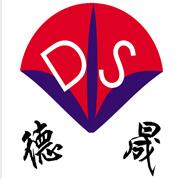- Biological buffer(21)
- Blood collection tube additives(12)
- Carbomer(2)
- trinder's reagent(9)
- Enzyme(14)
- Chemiluminescence reagent(9)
| Hubei xindesheng Material Technology Co., Ltd | |
|---|---|
| Country: | China |
| Tel: | +8618971041571 |
| E-mail: | zjing9632@gmail.com |
| QQ: | 2198447049 |
| Skype: | Chat Now! |
Do you understand these problems of Tris-HCl?
Release time: 2021-10-27
What is the difference between Tris-HCl powder and solution reagent?
Tris-HCl powder reagent and solution reagent are not only the difference between powder and solution, the powder reagent is dissolved in water to form a solution and the finished solution reagent is also different in use. The reason is that the molecular structure of tris (HOCH2) 3CNH2 contains an amino group, which reacts 1:1 with hydrochloric acid to form a salt, but there may be a small amount of Tris base in the powder product that does not completely react with hydrochloric acid.
What is the relationship between Tris-HCl and Tris-cl?
The two are the same reagent, but the writing is different. Tris-HCl is to add an appropriate amount of hydrochloric acid to the Tris-base solution to adjust the pH value you need. Tris series buffers (or HEPES) can be treated with DEPC, but these amine-containing reagents will accelerate the hydrolysis of DEPC. But if you must use DEPC, increase the final concentration of DEPC to 1%, and the effect will be the same as 0.1%.
Will the pH of Tris-HCl buffer change with temperature?
The pH of Tris-HCl buffer is greatly affected by temperature. Once the temperature changes, the pH will change significantly. The pH at 37°C is 0.18 lower than the pH at 23°C on average. The pH is 0.32 lower than the average pH at 12°C. Temperature changes have a great influence on the pH of the buffer, so it must be prepared at the operating temperature. Tris-HCl buffer prepared at room temperature cannot be used at 0°C to 4°C.
What is the difference between Tris and Tris-HCL?
Tris is an organic compound, mainly used in molecular biology to make a buffer or as a basic buffer. Tris-HCL is a buffer commonly used by molecular biologists to adjust the pH value of the solution or stabilize the pH value. Deciding whether to use Tris-HCL or Tris depends on the ongoing experiment. When the pH of the solution needs to be adjusted, conjugated acidic or basic components can be used. For example, if there is a plan that requires the use of tris HCl, then tris can be used to adjust the pH. (Tris and Tris-HCl are the same when formulated into buffers)
The difference and use of Tris-HCl and PBS buffer
The PKa value of the PBS solution changes with the dilution of the buffer, and inhibits the activity of most enzymes, including kinases, phosphorylases, dehydrogenases, etc. It is a phosphate buffer with a pH of 7.4. The pH is fixed and isotonic with human blood, so it is generally used for molecular cloning and cell culture experiments.
Tris-HCl is configured with trishydroxymethylaminomethane and hydrochloric acid, and then the pH can be adjusted. It is used in each PH segment. We use PH6.8 and pH8.8 for protein experiments, and it is generally used in laboratories. This is also in protein, DNA, and RNA experiments.

